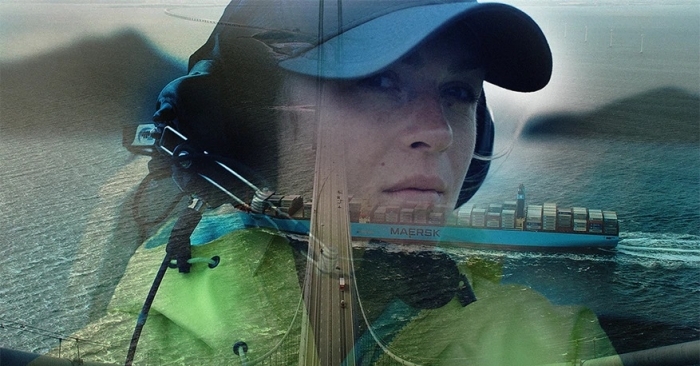Maersk reports 44% EBITDA growth to 8.2 billion in 2020
February 11, 2021: Despite low volumes during most of 2020, A.P. Moller – Maersk’s profitability grew throughout the first nine months and ended the year with record Q4 results in logistics and terminals, while ocean delivered an exceptional quarter driven by the increased volumes and current, temporary supply chain disruptions.

February 11, 2021: Despite low volumes during most of 2020, A.P. Moller – Maersk’s profitability grew throughout the first nine months and ended the year with record Q4 results in logistics and terminals, while ocean delivered an exceptional quarter driven by the increased volumes and current, temporary supply chain disruptions.
The company grew underlying earnings before interest, tax, depreciation and amortisation (EBITDA) 44 percent to $8.2 billion and revenue grew to $39.7 billion in 2020 compared to $38.9 billion last year.
Søren Skou, CEO of A.P. Moller – Maersk, said,“ I am proud that we have accelerated our transformation and delivered earnings growth during every quarter of 2020, despite very different market conditions, beginning with negative Covid-19 impact in the first half to a rebound in Q4.”
“Our customers want us to help them build more resilient supply chains and buy more end-to-end services. Consequently, our logistics business more than doubled earnings in 2020. We are today a profitable, growing logistics company with a broad offering of ocean and air transportation, port services and logistical capabilities, including warehousing, customs services and lead logistics,” he added.
While the demand surge in the second half of year created supply chain bottlenecks, including vessel and container shortages, and led to higher rates that contributed approximately $1.5 billion to results, ocean further improved its intrinsic performance by focusing on costs, agile capacity management and launching new digital offerings.
Logistics & services grew to $7 billion, compared to $6.3 billion last year, and EBITDA improved 110 percent to $454 million, supported by the acquisition of Performance Team as well as improved performance in intermodal, air freight forwarding and warehousing and distribution.
Gateway terminals saw a decrease in revenue of 3.9 percent to $3.2 billion in 2020 because of lower volumes due to the impact from the pandemic. EBITDA increased by 8.3 percent to $989 million, reflecting an improved EBITDA margin to 31 percent driven by higher revenue per move and cost reductions in several terminals.
In 2020, free cash flow improved to USD 4.6bn from USD 2.3bn leading to a USD 2.5bn reduction of net debt and USD 1.3bn returns to shareholders. Net result amounted to USD 2.9bn and the Board of Directors will recommend a dividend of DKK 330/share, up from DKK 150/share to the AGM on 23 March 2021.
Guidance for 2021
With the current outlook, there continues to be a high degree of uncertainty related to the impact from Covid-19 on the economic growth and global demand patterns. A.P. Moller - Maersk expects another year of earnings growth and transformation progress. We expect the current, exceptional situation to continue into 2021 with Q1 to be stronger than Q4, followed by a normalisation thereafter, and announce guidance for the full-year 2021 of an underlying EBITDA in the range of $8.5-10.5 billion, compared to $8.3 billion in 2020. This is equivalent to an underlying EBIT guidance of $4.3-6.3 billion and a free cash flow of above $3.5 billion.
Ocean is expected to grow in line with the global container demand at an expected 3-5 percent in 2021, with the highest growth seen in the first half-year.



